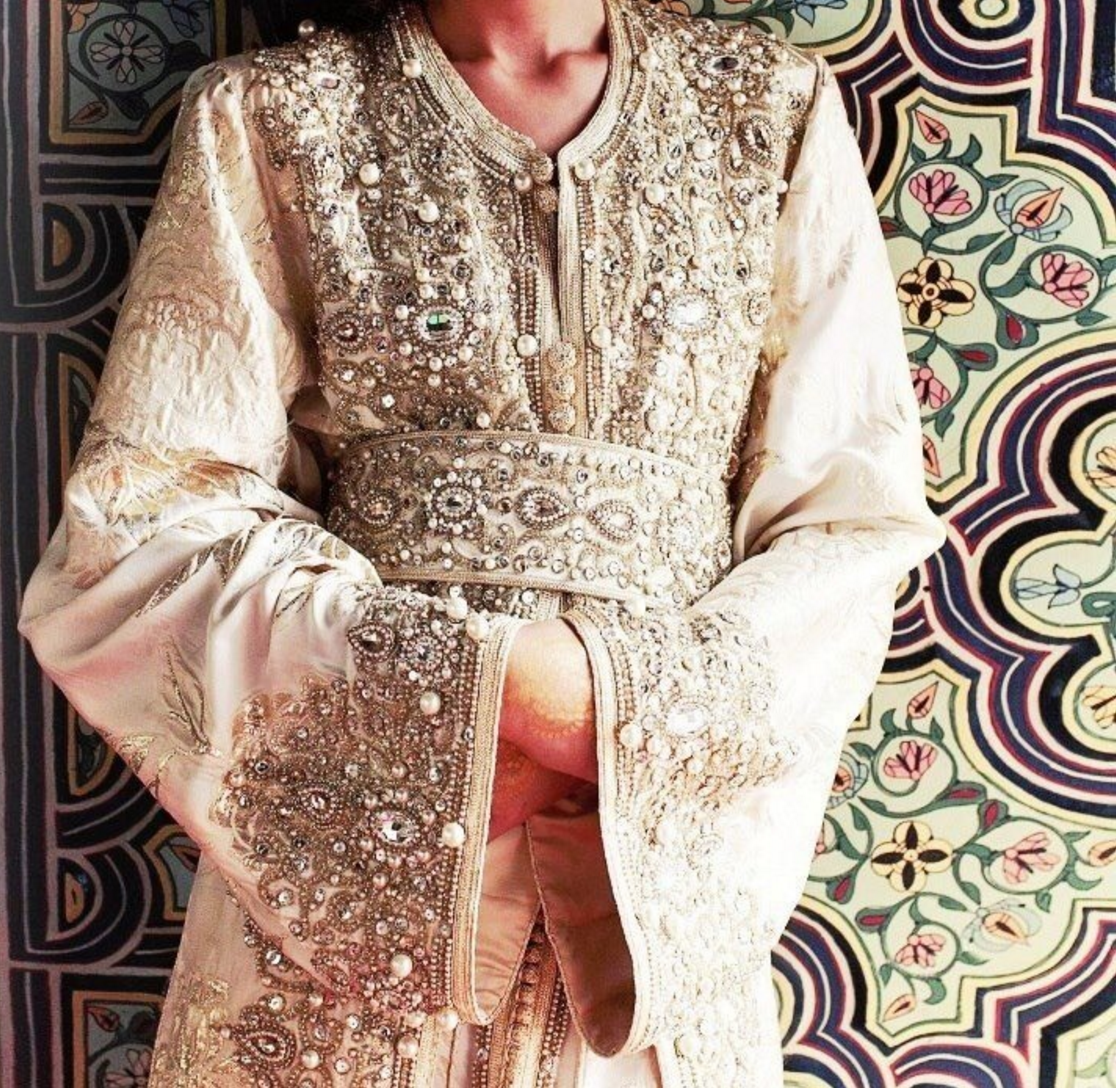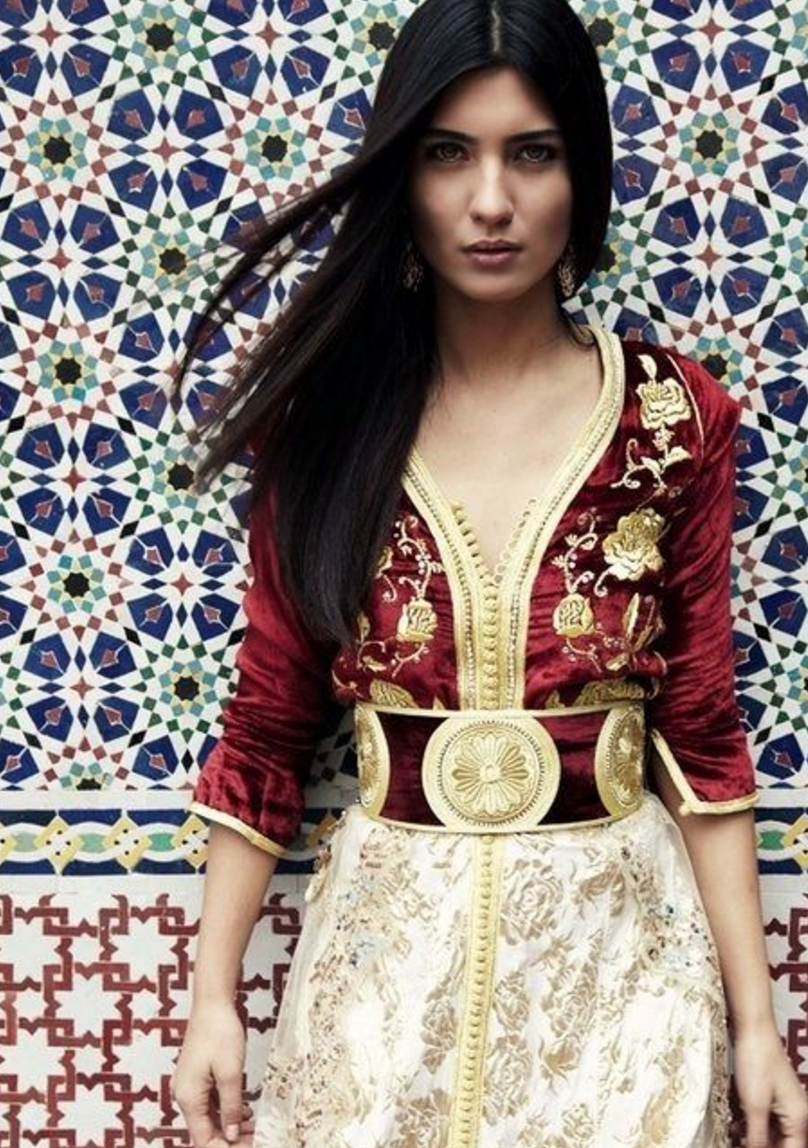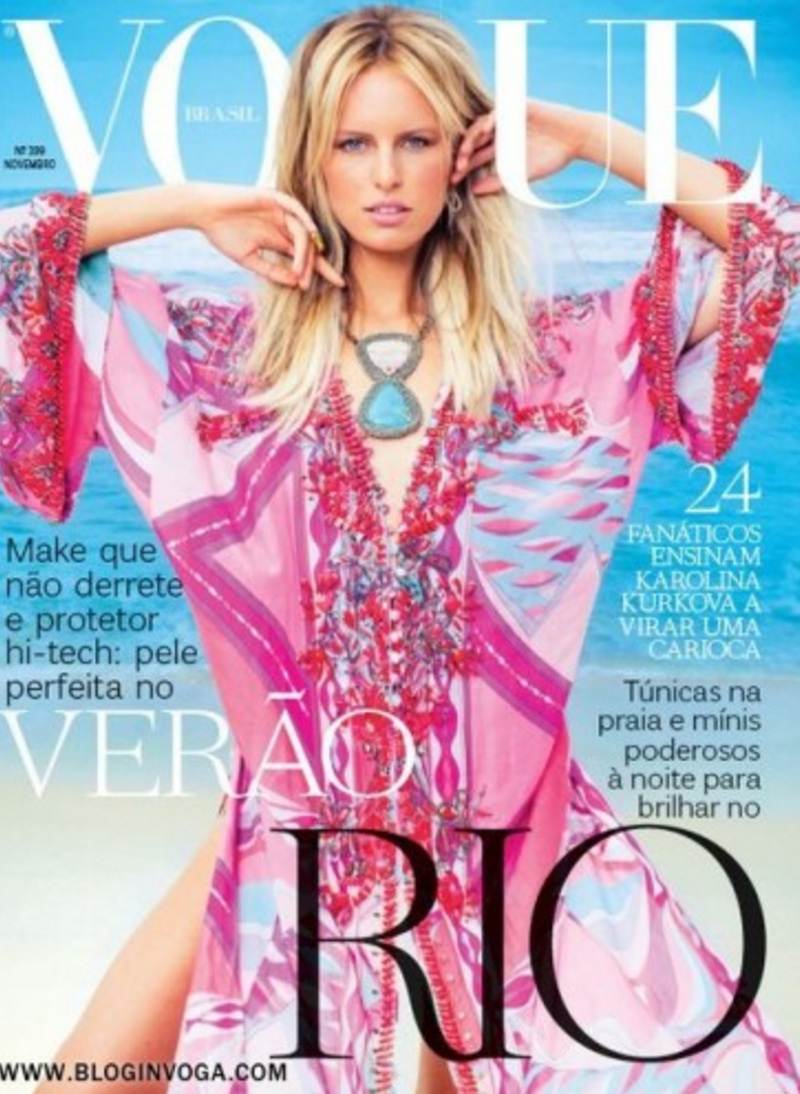I have always been drawn to the beauty and details of kaftans. I would see them worn during my travels and in fashion magazines. I became particularly fond of Moroccan kaftans when, a few years ago, a best friend gifted me two handcrafted kaftans during her trip to Morocco. The wonderful thing about kaftans are the many variations of style, color, fit and detail that makes every woman looks fantastic and one of a kind.
A kaftan or caftan (Arabic: قفطان qaftân) is a variant of the robe or tunic, versions of which have been worn by multiple cultures around the world for thousands of years. The kaftan is often worn as a overdress, usually reaching to the ankles. It can be made of wool, cashmere, silk, or cotton, and may be worn with a sash. The caftan is of ancient Mesopotamian origin, and is still worn by many middle-eastern ethnic groups.
The kaftan has evolved to include different cultural styles, purposes, and names. In many regions with a warm climate, the kaftan is worn as a light-weight, loose-fitting garment. The kaftan has served as a symbol of royalty in some cultures and as a symbol of marriage in others during some parts of history. In the United States and modern Western cultures, a variation of the kaftan is a symbol of educational ascension (graduation robes) and judicial power (judge’s robes)


